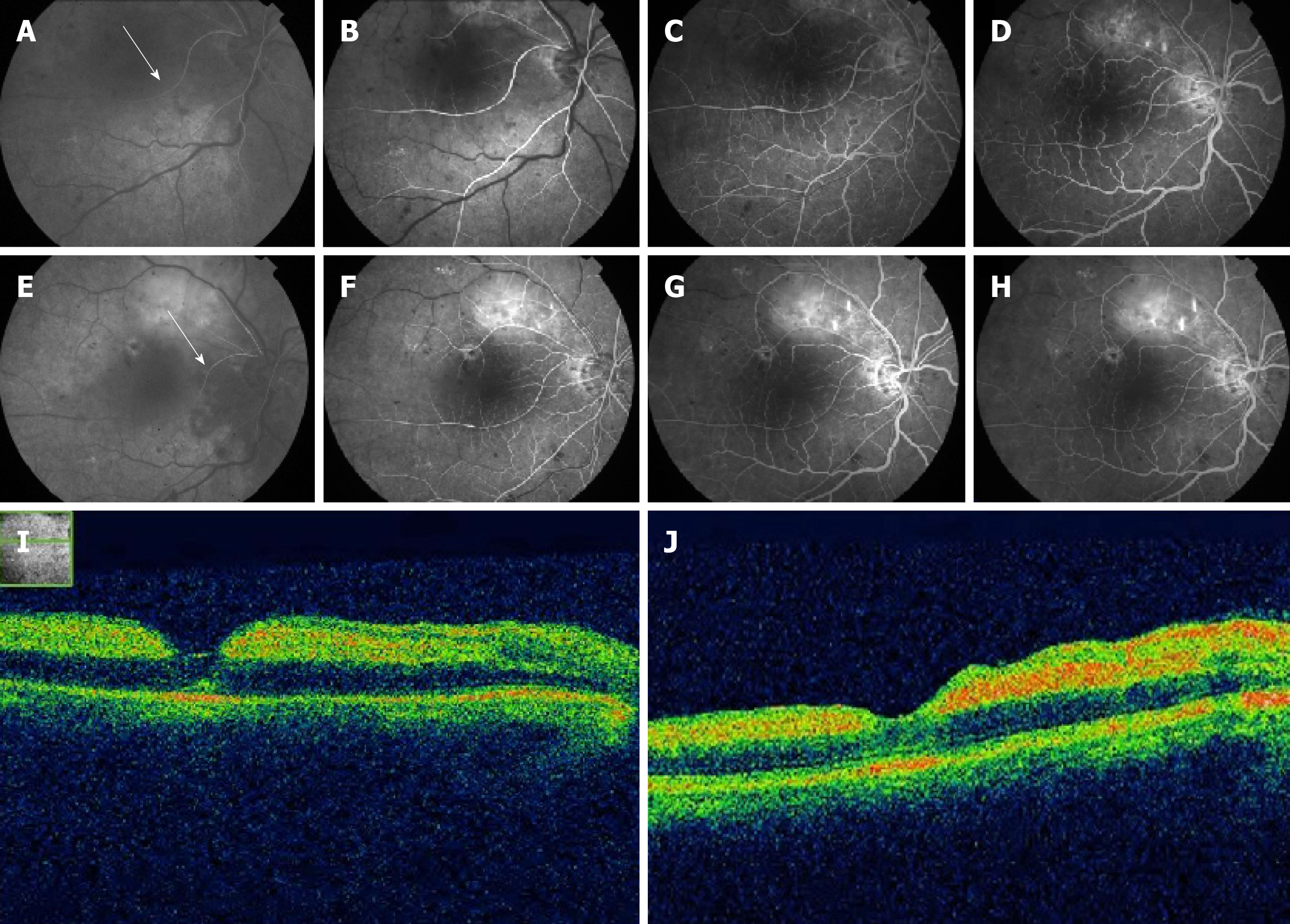Copyright
©The Author(s) 2020.
World J Clin Cases. Mar 6, 2020; 8(5): 980-985
Published online Mar 6, 2020. doi: 10.12998/wjcc.v8.i5.980
Published online Mar 6, 2020. doi: 10.12998/wjcc.v8.i5.980
Figure 1 Clinical timeline.
A 52-year-old male diagnosed with branch retinal artery occlusion and secondary neovascular glaucoma. BRAO: Branch retinal artery occlusion; FFA: Fundus fluorescein angiography; OCT: Optical coherence tomography; VA: Visual acuity; IOP: Intraocular pressure.
Figure 2 Color fundus image of the right eye at presentation showing an anomalous artery originating from the superior temporal arcade and crossing the macula into the inferior temporal retinal quadrant.
The anomalous artery is partially occluded, with a narrowed lumen. A cherry-red spot and cloudy whitening indicate macular edema in the large, yellowish area of elevation temporal to the disc.
Figure 3 Fundus fluorescein angiography and optical coherence tomography images for the right eye.
A: Fundus fluorescein angiography images obtained at 23 s; B: 30 s; C: 40 s; D: 50 s. The images show that the inferior temporal branch (arrow) is supplied by a branch from a superior temporal artery, with disc leakage and delayed filling time; E: Fundus fluorescein angiography images obtained at the 1-wk follow-up visit, at 18 s; F: 30 s; G: 40 s; H: 50 s; I: Optical coherence tomography demonstrates the presence of subretinal fluid and depicts the underlying layers of the fovea at presentation; J: At 1-wk follow-up.
- Citation: Yang WJ, Yang YN, Cai MG, Xing YQ. Anomalous retinal artery associated with branch retinal artery occlusion and neovascular glaucoma: A case report. World J Clin Cases 2020; 8(5): 980-985
- URL: https://www.wjgnet.com/2307-8960/full/v8/i5/980.htm
- DOI: https://dx.doi.org/10.12998/wjcc.v8.i5.980











